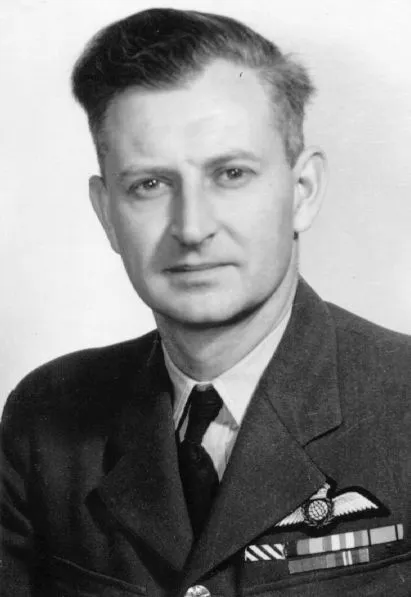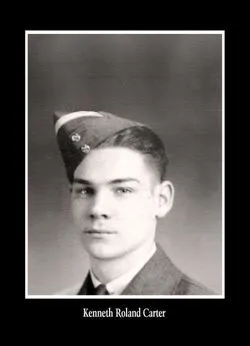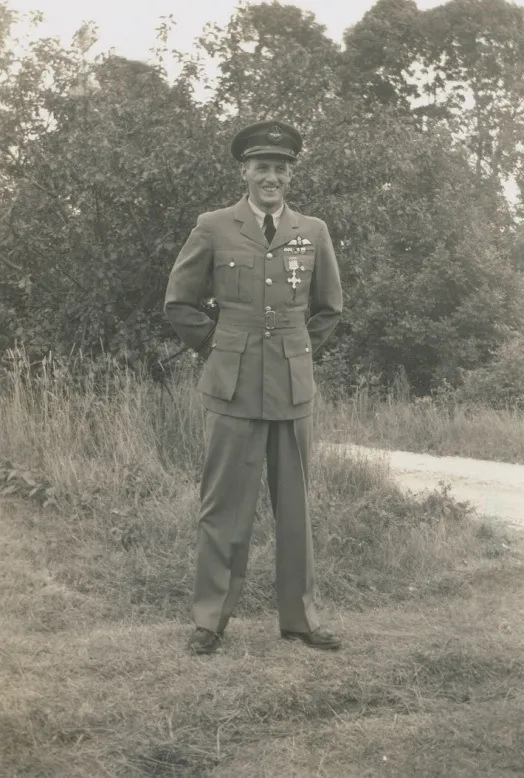Lachaine, Joseph Bernard Marcel (Corporal)
Killed in Flying Accident 1952-April-25
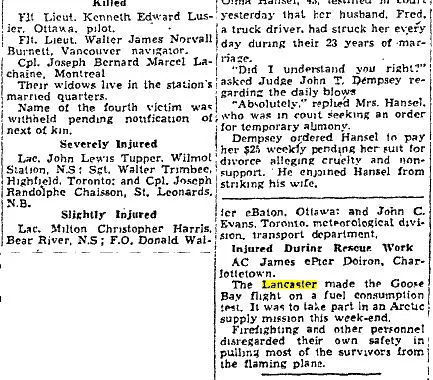

Birth Date: 1923-August-08
Born: Montreal, Quebec
Parents: Son of Leonard and Rose Kelly Lachaine.
Spouse: Husband of Lucille Lachaine. Father of Denise, Roger, Jean-Louis and Gilles Lachaine. Brother of Patrick and Fernand Lachaine and Dorothy Krill.
Home: Montreal, Quebec
Enlistment: Montreal, Quebec
Enlistment Date: 1942-November-24
Service
RCAF
Unit
1 (OT) ANS- Air Navigation School
Base
RCAF Station Summerside, Prince Edward Island
Rank
Corporal
Position
Service Numbers
24550
Home
Final Burial
Plot 32 Sec 33 Grave 90-1952
Crew or Other Personnel
Lancaster KB893
Mission
Lancaster Mk.X/10MP KB893
Operational 1952-April-25 to 1952-April-25
1 (OT) ANS (RCAF) RCAF Goose Bay, Labrador
1 Air Navigation School Lancaster aircraft KB 893 departed RCAF Goose Bay, Labrador on a return flight to RCAF Station Summerside, Prince Edward Island. On landing at Summerside the aircraft bounced badly and the pilot attempted to go around for another try. The aircraft climbed steeply stalled and crashed. and burned. Investigation showed the crash was due to the Center of Gravity being beyond the aft limit because 5 of the 12 aboard were in the back of the fuselage
Four air crew were killed, five seriously injured and three slightly injured The list of those aboard is incomplete to date
Flight Lieutenant K E Lussier DFC (RCAF), Flight Lieutenant W J Burnett DFC (RCAF), Flying Officer K R Carter (RCAF) and Corporal J B Lachaine (RCAF) were killed in this flying accident
Leading Aircraftman J L Tupper (RCAF), Sergeant W Trimbee (RCAF) and Corporal J R Chaisson (RCAF) survived but were severely injured
Leading Aircraftman M C Harris (RCAF), Flying Officer D W Beaton (RCAF) and civilian J C Evans (Meteorological Division, Transport Department) were slightly injured in the crash
During the rescue operation, Aircraftman J P Doiron (RCAF) was injured on the ground
Lancaster serial: KB893
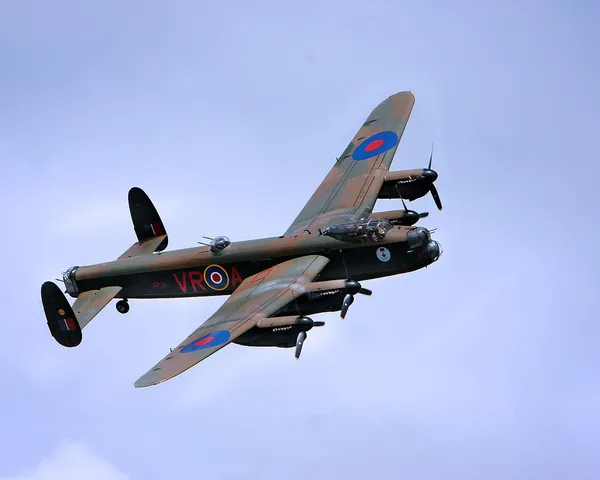
Canadian Warplane Heritage Museum
The Avro Lancaster is a British Second World War heavy bomber. It was designed and manufactured by Avro as a contemporary of the Handley Page Halifax, both bombers having been developed to the same specification, as well as the Short Stirling, all three aircraft being four-engined heavy bombers adopted by the Royal Air Force (RAF) during the same wartime era.
The Lancaster has its origins in the twin-engine Avro Manchester which had been developed during the late 1930s in response to the Air Ministry Specification P.13/36 for a capable medium bomber for "world-wide use". Originally developed as an evolution of the Manchester (which had proved troublesome in service and was retired in 1942), the Lancaster was designed by Roy Chadwick and powered by four Rolls-Royce Merlins and in one version, Bristol Hercules engines. It first saw service with RAF Bomber Command in 1942 and as the strategic bombing offensive over Europe gathered momentum, it was the main aircraft for the night-time bombing campaigns that followed. As increasing numbers of the type were produced, it became the principal heavy bomber used by the RAF, the Royal Canadian Air Force (RCAF) and squadrons from other Commonwealth and European countries serving within the RAF, overshadowing the Halifax and Stirling. Wikipedia
Unit Desciption
1 (OT) ANS (1 Air Navigation School)
Nos. 1 & 2 Air Navigation Schools offered four-week courses in astronavigation and were the last step for Air Observers.
The RAF schools, Nos. 31, 32, and 33, provided the same training as Air Observer Schools.
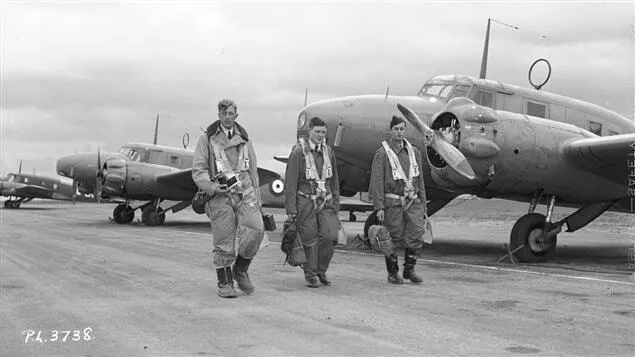
RCAF.info - RCAF Station Trenton ON
NO1 ANS moved to Rivers Manitoba 23 November 1940
RCAF.info - RCAF Station Rivers MB
NO 1 ANS was redesignated Central Navigation School after an amalgamation with NO 2 ANS from Pennfield Ridge, NB May 11 1942
Project 44 BCATP
